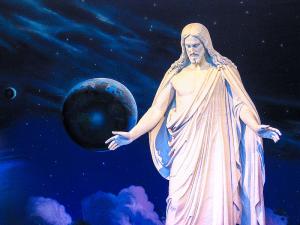There’s a lot of top 5 lists out there listing the best books on Mormonism. I thought it might be useful to provide a similar list specifically focused on “modern Mormonism.” Judging which books are the “best,” of course, is a bit subjective. I am, by training, a historian of the early American republic, and my research on Mormonism is thus largely limited to its earliest years. The books listed below, then, are those I’ve found most helpful in trying to understand modern Mormonism.
Note: Trying to put together a top 5 list proved difficult, so I’ve opted instead to provide the best books in 5 categories, with 2 books per category. Thanks also to my co-contributors Matt Bowman and Ben Park for their input and suggestions to this list.
Surveys of Modern Mormonism
- Matthew Bowman, The Mormon People: The Making of an American Faith (New York: Random House, 2012). Fellow Peculiar People contributor and professor of religion at Hamden-Sydney College Matt Bowman has received much praise for his lively and readable volume published earlier this year, and rightfully so. It is the best one volume history of Mormonism out there, synthesizing a half century of scholarship on all aspects of the Mormon movement into a very accessible narrative. Matt’s book is especially deft in its provocative interpretation of the progressive roots of institutional Mormonism today and in its close attention to, as the title indicates, the Mormon people.
- Claudia L. Bushman, Contemporary Mormonism: Latter-day Saints in Modern America (Westport, Connecticut: Praeger, 2006). Neatly divided into 10 thematic chapters (with an eleventh reflecting on “the Church at one hundred and seventy-five”), Bushman’s short book is a useful reference for those wanting a short overview of the LDS Church’s ecclesiology and theology (chapter 2) or its missionary impulse and expanding international reach (chapter 3), or a summary of Mormonism and race, ethnicity, and class (chapter 6) or gender and sexuality (chapter 7).
Sociological Studies
- Armand Mauss, The Angel and the Beehive: The Mormon Struggle with Assimilation (Urbana: University of Illinois Press, 1994). Mauss’s name is nearly synonymous with Mormon historical sociology, and this book is perhaps his finest. Combining social scientific data with interpretive skill, Mauss analyzes the relationship between Mormons and the surrounding American culture, using two well-recognized symbols of Mormonism to frame his analysis—the angel, representing the spiritual beliefs and practices that mark Mormonism as distinct from the culture it inhabits; and the beehive, symbolizing the Mormon work ethic and its social, economic, and political ties to America today.
- Armand Mauss, All Abraham’s Children: Changing Mormon Conceptions of Race and Lineage (Urbana: University of Illinois Press, 2003). Mormons, it is well known, have a complicated relationship with racial and ethnic minorities. But to dismiss Mormons, both past and present, as mere racists misses a much richer, complex, and difficult history, argues Mauss. Mormon racism and racialism has not been static from the 1830s until now, and ideas and attitudes about such issues will likely continue to change in response to both external pressures and internal shifts.
Mormon Women
- Maureen Ursenbach Beecher and Lavina Fielding Anderson, eds., Sisters in Spirit: Mormon Women in Historical and Cultural Perspective (Urbana: University of Illinois Press, 1992).There is, disappointingly, something of a lacuna of scholarship on Mormon women (though that is thankfully changing). That does not mean, however, that what has been written is anything less than excellent, and Sisters in Spirit is still, in my opinion, the best book on modern Mormon women available. This collection of essays is part historical scholarship, part theological scholarship, and part grassroots activism.
- Martha Sontagg Bradley, Pedestals and Podiums: Utah Women, Religious Authority, and Equal Rights (Salt Lake City: Signature Books, 2005). Examining the participation of both Mormon leaders and Mormon laity in the debates over the Equal Rights Amendment in the 1970s, Bradley highlights the role of Mormon women on both sides of the issue and analyzes the way each group made use of Mormon history to support their aims. The effects of this division within Mormonism remain today, making Pedestals and Podiums relevant to understanding not only important shifts in the 1970s and 1980s but also ongoing internal debates among Mormon women today.
Biography and Church Leaders
- Gregory A. Prince and Wm. Robert Wright, David O. McKay and the Rise of Modern Mormonism (Salt Lake City: University of Utah Press, 2005). Utilizing previously unavailable manuscript sources (especially the David O. McKay papers kept by his secretary Clare Middlemiss) as well as hundreds of oral history interviews, Prince and Wright provide an excellent biography of the LDS Church’s 9th President that doubles as a gripping history of (as the subtitle suggests) the rise of modern Mormonism. Employing a thematic approach, the authors demonstrate the importance of McKay’s contribution to significant changes in Mormon missionary work, public relations and image, education, and attitudes toward race, revelation, and prophecy.
- Edward L. Kimball, Lengthen Your Stride: The Presidency of Spencer W. Kimball (Salt Lake City: Deseret Book, 2005). Don’t let the author (Edward is Spencer’s youngest son) or the publisher (Deseret Book is the LDS Church’s in-house publisher) fool you; Lengthen Your Stride is candid, even-handed, and well-written biography. It is also, like the McKay biography, the best book-length source on an important period in recent Mormon history. Spencer Kimball’s presidency saw the church confronted with new opportunities and new challenges, and Kimball left his mark on Mormonism in several ways; perhaps none more important than the 1978 revelation lifting of the infamous “priesthood ban,” which previously denied full participation in Mormon worship and church leadership to black Latter-day Saints.
Lived Religion
- Susan Buhler Taber, Mormon Lives: A Year in the Elkton Ward (Urbana: University of Illinois Press, 1993). In my opinion, Taber’s study is one of the most underappreciated contributions to Mormon studies. Part ethnographic study and part (to borrow a Mormon term) ward history, Taber’s book is simultaneously revealing and moving, providing unparalleled insight into what the lives of Latter-day Saints in a largely typical Mormon congregation look like as they worship together, serve one another, and demonstrate what it means to be a Mormon in modern America.
- On Sunday: Mormon Portraits of a Global Church (New York: Mormon Artists Group, 2010). This unique selection of essays includes eleven descriptions of a Mormon church service on the same Sunday from various locations all over the world, from the heart of Mormonism in Provo, Utah to the Arab state of Kuwait, and several locations in between. Because On Sunday includes almost no editorial commentary on the several essays it presents, it allows Latter-day Saints to speak for themselves about what their religion means to them. It is in those descriptions that the local peculiarities and personal perspectives that define LDS worship are put on full display. Readers learn that even in a highly correlated church, lived religion manifests itself in peculiar ways.











